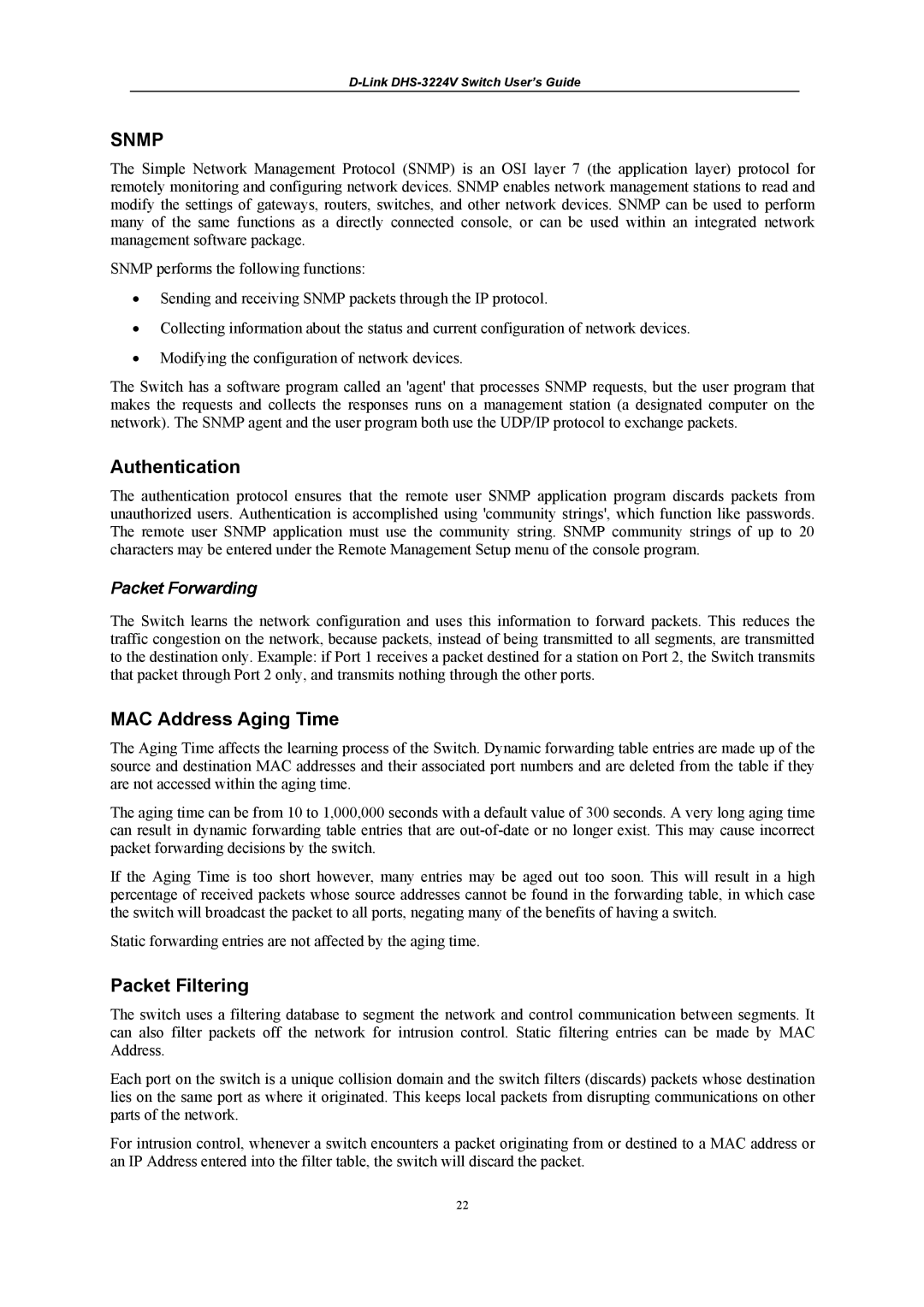SNMP
The Simple Network Management Protocol (SNMP) is an OSI layer 7 (the application layer) protocol for remotely monitoring and configuring network devices. SNMP enables network management stations to read and modify the settings of gateways, routers, switches, and other network devices. SNMP can be used to perform many of the same functions as a directly connected console, or can be used within an integrated network management software package.
SNMP performs the following functions:
•Sending and receiving SNMP packets through the IP protocol.
•Collecting information about the status and current configuration of network devices.
•Modifying the configuration of network devices.
The Switch has a software program called an 'agent' that processes SNMP requests, but the user program that makes the requests and collects the responses runs on a management station (a designated computer on the network). The SNMP agent and the user program both use the UDP/IP protocol to exchange packets.
Authentication
The authentication protocol ensures that the remote user SNMP application program discards packets from unauthorized users. Authentication is accomplished using 'community strings', which function like passwords. The remote user SNMP application must use the community string. SNMP community strings of up to 20 characters may be entered under the Remote Management Setup menu of the console program.
Packet Forwarding
The Switch learns the network configuration and uses this information to forward packets. This reduces the traffic congestion on the network, because packets, instead of being transmitted to all segments, are transmitted to the destination only. Example: if Port 1 receives a packet destined for a station on Port 2, the Switch transmits that packet through Port 2 only, and transmits nothing through the other ports.
MAC Address Aging Time
The Aging Time affects the learning process of the Switch. Dynamic forwarding table entries are made up of the source and destination MAC addresses and their associated port numbers and are deleted from the table if they are not accessed within the aging time.
The aging time can be from 10 to 1,000,000 seconds with a default value of 300 seconds. A very long aging time can result in dynamic forwarding table entries that are
If the Aging Time is too short however, many entries may be aged out too soon. This will result in a high percentage of received packets whose source addresses cannot be found in the forwarding table, in which case the switch will broadcast the packet to all ports, negating many of the benefits of having a switch.
Static forwarding entries are not affected by the aging time.
Packet Filtering
The switch uses a filtering database to segment the network and control communication between segments. It can also filter packets off the network for intrusion control. Static filtering entries can be made by MAC Address.
Each port on the switch is a unique collision domain and the switch filters (discards) packets whose destination lies on the same port as where it originated. This keeps local packets from disrupting communications on other parts of the network.
For intrusion control, whenever a switch encounters a packet originating from or destined to a MAC address or an IP Address entered into the filter table, the switch will discard the packet.
22
